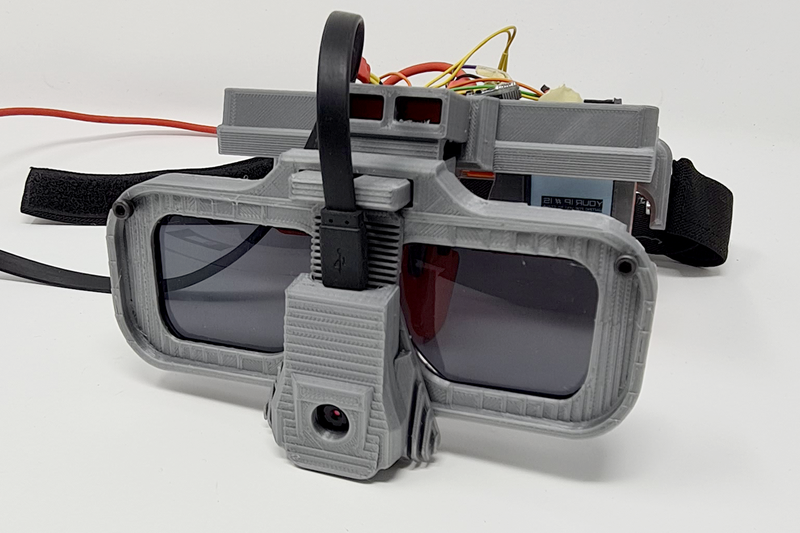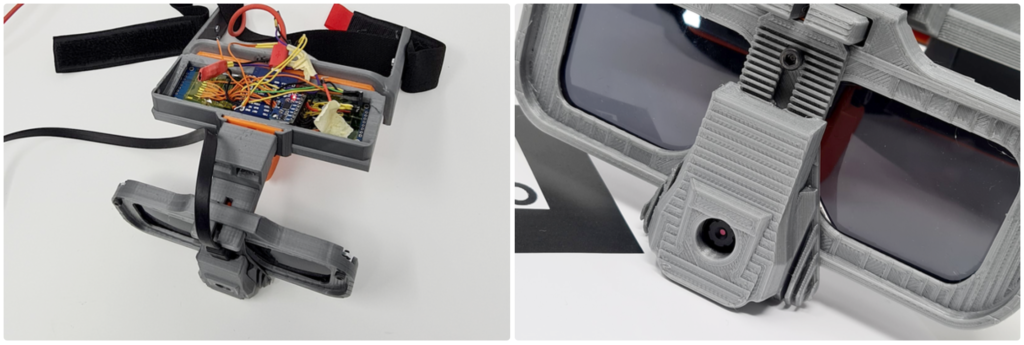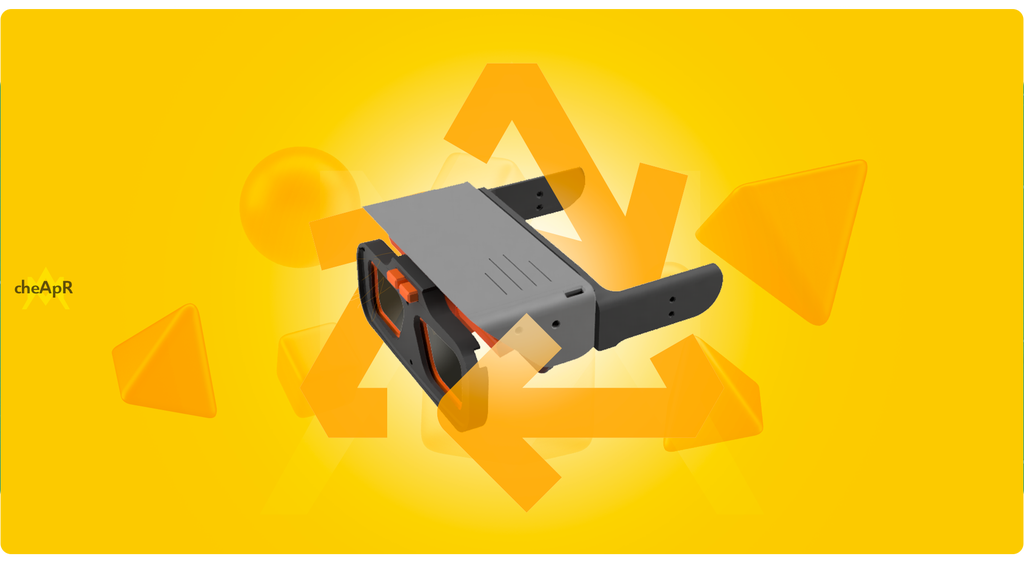CheApR is the open-source headset you build on your own.
When Jeri Ellsworth and her team launched a Kickstarter campaign for their Tilt Five tabletop augmented reality glasses, it caught the attention of tech enthusiast Arnaud Atchimon. Atchimon loved the idea of how cutting-edge hardware like the Tilt Five glasses and AR could be a big game-changer for tabletop gaming and remote socialization. What he didn’t love, however, was the pricey and difficult-to-purchase hardware.
His solution was cheApR, an open-source AR headset built using 3D printed parts and electronics lying around his lab. Atchimon, who is tech savvy but doesn’t have an engineering or electronics background, conducted lot of a good deal of research in order to bring his proprietary AR device to life.
For inspiration, Atchimon turned to the work of creator Lovyan03, whose ScreenshotSender project was, “mind-blowing and eye-opening,” according to Atchimon. He used this project as a guide to help him develop his CheApR headset. According to Atchimon, the development of his open-source AR headset wouldn’t have been possible if not for Lovyan03’s expertise and guidance. You can explore more of Lovyan03’s work via his Github page.
Atchimon broke his build down into multiple steps; some simple, others a bit more complex depending on your knowledge of 3D printing and assembly. The secret is to take your time and and enjoy the process; maybe play a few tunes in the background as you fiddle.

Atchimon used a 3D printer to print out parts (which he has conveniently uploaded to his own Github page), spare electronics he had sitting around his house, and parts he purchased online. To help you with your build Atchimon has created links on his Instructable site for each part, including information on where they can be purchased. Here’s what tools you’ll need (in addition the aforementioned 3D printed parts):
- Cutter
- Screw drivers
- M3 nuts & bolts
- Hot glue gun
- Double sided tape
- Kapton Tape
- Permanent markers
When all’s said and done the entire build should cost you roughly no more than $80USD.
Atchimon turned to free tools on the internet such as open-source electronics platform Arduino and Processing to upload the system libraries and get the headset up-and-running.
During an interview with VRScout, Darren Prodger, Manager of the IdeaLab at Skidmore College, talked about the importance of DIY projects like cheApR saying, “Barriers crumble when people have the space to explore and companies offer modeling software for free,” Prodger adds, “Now nearly anyone can tinker around with it and this all leads to new innovations.”

Atchimon knows his AR headset isn’t perfect. As a matter of fact, he’s asking users for any improvements he can make to the coding and design. For now, however, Atchimon is excited to see where cheApR could go in the years ahead and how people can use his steps to tinker on their own designs.
Prodger agrees, saying, “The information is out there on Instructables, YouTube, Thingiverse, or manufacturer websites. It’s just a matter of looking for it.”
Image Credit: a-RN-au-D
The post Build Your Own Open-Source AR Headset For Under $80 appeared first on VRScout.



